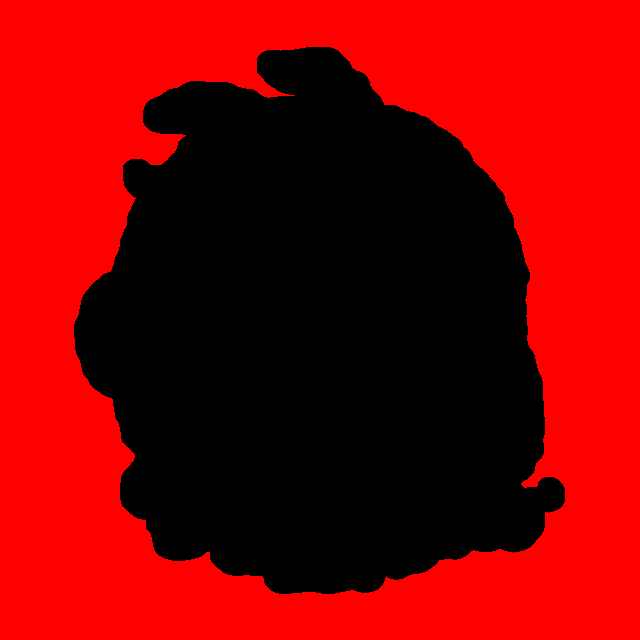我目前正在做一个简单的项目
它正在删除任何图像的背景并将其转换为贴纸,但它并没有让我更平滑
import cv2
import numpy as np
from PIL import Image, ImageFilter
from google.colab.patches import cv2_imshow
from matplotlib import pyplot as pl
#img = cv2.imread("/content/police-car-icon-cartoon-style-vector-16884775.jpg")
remove_background("/content/WhatsApp Image 2020-08-17 at 1.08.33 AM (2).jpeg")
def remove_background(img1):
#== Parameters =======================================================================
BLUR = 5
CANNY_THRESH_1 = 10
CANNY_THRESH_2 = 100
MASK_DILATE_ITER = 10
MASK_ERODE_ITER = (1,1)
MASK_COLOR = (220,220,220) # In BGR format
#== Processing =======================================================================
#-- Read image -----------------------------------------------------------------------
img = cv2.imread(img1)
#img = cv2.resize(img, (600,600))
gray = cv2.cvtColor(img,cv2.COLOR_BGR2GRAY)
#-- Edge detection -------------------------------------------------------------------
edges = cv2.Canny(gray, CANNY_THRESH_1, CANNY_THRESH_2)
edges = cv2.dilate(edges, None)
##edges = cv2.erode(edges, None)
#-- Find contours in edges, sort by area ---------------------------------------------
contour_info = []
contours, _ = cv2.findContours(edges, cv2.RETR_LIST, cv2.CHAIN_APPROX_NONE)
for c in contours:
contour_info.append((
c,
cv2.isContourConvex(c),
cv2.contourArea(c),
))
contour_info = sorted(contour_info, key=lambda c: c[2], reverse=True)
#-- Create empty mask, draw filled polygon on it corresponding to largest contour ----
# Mask is black, polygon is white
mask = np.zeros(edges.shape)
for c in contour_info:
cv2.fillConvexPoly(mask, c[0], (255))
# cv2.fillConvexPoly(mask, max_contour[0], (255))
#-- Smooth mask, then blur it --------------------------------------------------------
mask = cv2.dilate(mask, None, iterations=MASK_DILATE_ITER)
mask_stack = np.dstack([mask]*3) # Create 3-channel alpha mask
mask_u8 = np.array(mask,np.uint8)
back = np.zeros(mask.shape,np.uint8)
back[mask_u8 == 0] = 255
border = cv2.Canny(mask_u8, CANNY_THRESH_1, CANNY_THRESH_2)
border = cv2.dilate(border, None, iterations=3)
masked = mask_stack * img # Blend
masked = (masked * 255).astype('uint8')
# background Colors (blue,green,red)
masked[:,:,0][back == 255] = 190
masked[:,:,1][back == 255] = 190
masked[:,:,2][back == 255] = 190
cv2.imwrite('img.png', masked)
cv2_imshow( masked)
cv2.waitKey(0)
cv2.destroyAllWindows()

这是输出图像

但我希望这个图像像这样更平滑

最佳答案
这是如何用一些彩色图像而不是 Python/OpenCV 中的透明度替换背景。
输入:

import cv2
import numpy as np
import skimage.exposure
# load image
img = cv2.imread('bunny.jpg')
# convert to gray
gray = cv2.cvtColor(img, cv2.COLOR_BGR2GRAY)
# threshold
thresh = cv2.threshold(gray, 32, 255, cv2.THRESH_BINARY)[1]
# blur threshold image
blur = cv2.GaussianBlur(thresh, (0,0), sigmaX=3, sigmaY=3, borderType = cv2.BORDER_DEFAULT)
# stretch so that 255 -> 255 and 127.5 -> 0
stretch = skimage.exposure.rescale_intensity(blur, in_range=(127.5,255), out_range=(0,255)).astype(np.uint8)
# threshold again
thresh2 = cv2.threshold(stretch, 0, 255, cv2.THRESH_BINARY)[1]
# get external contour
contours = cv2.findContours(thresh2, cv2.RETR_EXTERNAL, cv2.CHAIN_APPROX_SIMPLE)
contours = contours[0] if len(contours) == 2 else contours[1]
big_contour = max(contours, key=cv2.contourArea)
# draw white filled contour on black background
contour = np.zeros_like(thresh, dtype=np.uint8)
cv2.drawContours(contour, [big_contour], 0, 255, -1)
# dilate mask for dark border
kernel = cv2.getStructuringElement(cv2.MORPH_ELLIPSE, (20,20))
mask = cv2.morphologyEx(contour, cv2.MORPH_DILATE, kernel)
# create red colored background image
bckgrnd = np.full_like(img, (0,0,255), dtype=np.uint8)
# apply mask to img
img_masked = cv2.bitwise_and(img, img, mask=mask)
# apply inverse mask to colored background image
bckgrnd_masked = cv2.bitwise_and(bckgrnd, bckgrnd, mask=255-mask)
# combine the two
result = cv2.add(img_masked, bckgrnd_masked)
# save output
cv2.imwrite('bunny_thresh2.png', thresh)
cv2.imwrite('bunny_mask2.png', mask)
cv2.imwrite('bunny_masked2.png', img_masked)
cv2.imwrite('bunny_background_masked2.png', bckgrnd_masked)
cv2.imwrite('bunny_result2.png', result)
# Display various images to see the steps
cv2.imshow('gray',gray)
cv2.imshow('thresh', thresh)
cv2.imshow('blur', blur)
cv2.imshow('stretch', stretch)
cv2.imshow('thresh2', thresh2)
cv2.imshow('contour', contour)
cv2.imshow('mask', mask)
cv2.imshow('img_masked', img_masked)
cv2.imshow('bckgrnd_masked', bckgrnd_masked)
cv2.imshow('result', result)
cv2.waitKey(0)
cv2.destroyAllWindows()
阈值图像:

蒙版图片:

应用于图像的蒙版:

应用于背景的反转蒙版:

结果:

关于python - 使图像边缘平滑,我们在Stack Overflow上找到一个类似的问题: https://stackoverflow.com/questions/63507755/